The creators of the new light sensors got their inspiration from the eyes of mantis shrimp, which are exceptionally good at accurately capturing subtle gradations of color. So, the researchers created an organic electronic sensor that mimics the mantis shrimp’s eye. It’s called the Stomatopod Inspired Multispectral and POLarization sensitive (SIMPOL) […]
A fish’s fins may be as sensitive to touch as fingertips
A fish’s fin has been found to be able to feel and detect textures similar to that of a human finger. This suggests that fish fins are not strictly motor structures, but it also plays some sensory role. Certain fish brush their fins against the sea floor, perhaps to detect changes […]
Paper, Eating microRNAs
Cross‐kingdom communication via non‐coding RNAs is a recent discovery. Exogenous microRNAs (exog‐miRNAs) mainly enter a host through diet. Generally considered unstable in the gastrointestinal (GI) tract, some exogenous RNAs may resist these harsh conditions, especially if transported in extracellular vesicles. They could then reach the intestines and more probably exert a […]
Powerful new genetic engineering methods have given scientists the potential to revolutionize several sectors of global urgency. So-called gene drives, which leverage CRISPR technology to influence genetic inheritance, carry the promise of rapidly spreading specific genetic traits throughout populations of a given species. Gene-drive technologies applied in insects, for example, are being designed to halt […]
This article explores how bugs will influence the smartphone industry through various technologies.
This is an optimization of 3D network typology, allowing for more iterative, accurate reconstruction of bone-like structures, for the use in bio-inspired designs which are inspired by these natural structures, such as structural devices inspired by bird bones, etc.
Drawing inspiration from marine life that is able to withstand the pressures of the deepest aquatic environments, scientists have created a soft autonomous robot that is go where none have before. To design robots that can maneuver through deep waters, scientists have looked to the Mariana hadal snailfish, which can be […]
The last decade has witnessed a rapid growth of nanoscale-oriented biosensors that becomes one of the most promising and rapidly growing areas of modern research. Despite significant advancements in conception of such biosensors, most are based at evaluation of molecular, or protein interactions. It is however becoming increasingly evident that functionality of a living system […]
Northwestern Engineering researchers have developed a theoretical model to design soft materials that demonstrate autonomous oscillating properties that mimic biological functions. The work could advance the design of responsive materials used to deliver therapeutics as well as for robot-like soft materials that operate autonomously. The design and synthesis of materials with […]
Construction is a labor-intensive industry that relies on dependent processes being completed in series. Redesigning fabrication processes to allow for parallelization and replacing workers with mobile multi-robot construction systems are strategies to expedite construction, but they typically require extensive supporting infrastructure and strictly constrain fabricable designs. Here […]
Scientists at the University of Freiburg have discovered hitherto unknown intermediary steps by which enzymes are used to produce the carbon backbone of rubromycins. This is vital both for pharmaceutical bioengineering, for nano-design that might mimic the elegant and efficient methods of self-replication here employed, and for engineered tools meant to […]
The Stanford Biodesign Innovation Fellowship is a launch pad for initiating, redirecting, or accelerating a career in health technology innovation. Individuals with a background in medicine, biosciences, engineering, computer science, product design, law, or business are encouraged to apply. The fellowship is a full-time, intensive experience that runs from the beginning […]
When visiting a local aquarium, there is no lack of spectacles that may capture one’s attention – glimmering schools of sardines swimming as a unit, colorful sea dragons hiding among aquatic plants, and most delectably, the distinct aroma of the fish and chips served in the food court. One sight, however, […]
A bio-inspired approach to coating polydopamine (PDA) onto bamboo fiber (BF) was developed to enhance the poor interfacial bonding of BF/polybutylene succinate (PBS) biocomposites. (Reinforcing natural fibers with mussel adhesion techniques) Recently, energy shortages and environmental pollution have become a common human concern. For conventional plastics, such […]
Gathering inspiration from nature for the design of new materials, products and processes is a topic gaining rapid interest among scientists and engineers. In this review, we introduce the concept of nature-inspired chemical engineering (NICE). We critically examine how this approach offers advantages over straightforward biomimicry and distinguishes itself from bio-integrated […]
Environmental noise is a major source of selection on animal sensory and communication systems. The acoustic signals of other animals represent particularly potent sources of noise for chorusing insects, frogs, and birds, which contend with a multi-species analog of the human “cocktail party problem” (i.e., our difficulty following speech in crowds). […]
Article: https://www.the-scientist.com/the-literature/petunias-waxy-cuticle-regulates-the-plants-sweet-smell-68376?_ga=2.217703326.902230955.1613580877-954214786.1613580877 Paper: https://www.nature.com/articles/s41589-020-00670-w.epdf?sharing_token=xQ4Vn7ZFjCwwYKni118aU9RgN0jAjWel9jnR3ZoTv0O6E76TZsNQfbKhEzBXu2dbng2jM_-3Vcx7pH3zb_EeOSJGQoB_XzzvAxUkxdqpkla1ByZjCKuaymnHTdhItg8Zq9wbcrl-GguP9Bl4f1ZhA6kUxSjp3apNq4UcwOIdY4s This paper details the biological discovery that altering the “cuticle” of a petunia flower (the waxy layer from where volatile compounds [VOCs] exit a cell) actually affects the amount of VOCs released. This means that we now know that changing the cuticle of flowers by physical or […]
Biodesign Challenge 2021
Biodesign Challenge is an education program and competition that is shaping the first generation of biodesigners. We partner high school and university students with scientists, artists, and designers to envision, create, and critique transformational applications in biotech. The 2021 sign up has passed, but definitely look to sign up during 2022!
An Internet hosting center hosts services on its server ensemble. The center must allocate servers dynamically amongst services to maximize revenue earned from hosting fees. The finite server ensemble, unpredictable request arrival behavior and server reallocation cost make server allocation optimization difficult. Server allocation closely resembles honeybee forager allocation amongst flower patches to optimize nectar […]
News, Soft robot reaches the deepest part of the ocean
The creation of the robot was inspired by the bodily structure of sea creatures, who are able to survive the crazy pressure of the deep sea with their soft bodies. This robot can survive even the deepest parts of the world’s seas, the […]
Robotic Arm Inspired By Elephant Trunk
The elephant trunk inspired the German company Festo to develop a bionic arm. Called the Bionic Handling Assistant, the free-moving “third hand system,” as Festo calls it, has plenty of uses in situations that require support from machines. That can include medical technology, rehabilitation and as an aid for the handicapped, […]
We are looking for brilliant individuals, who thrive in open, collaborative and diverse research environments, to help advance and accelerate CZ Biohub research projects to join our Summer 2021 Internship Program from June 14th through August 20th. Interns available for the full 10 weeks and able to work full-time will be considered. Analytical, computational, engineering […]
National Science Foundation, Maryland
The Geosciences Bridge Program is funded by a grant from the National Science Foundation (NSF). It is a 6-week paid ($500/week stipend + housing + meals) internships at the University of Maryland Eastern Shore (UMES) The Program provides an opportunity for graduating High School seniors, particularly from […]
Paper, Rapid Drying for Wet Mammals
Abstract: In cold wet weather, mammals face hypothermia if they cannot dry themselves. By rapidly oscillating their bodies, through a process similar to shivering, furry mammals can dry themselves within seconds. We use high-speed videography and fur particle tracking to characterize the shakes […]
2021 Biomimicry Global Design Challenge
This is the 2021 Global Biomimicry Design Challenge. Competitors submit their work that showcases biomimicry in design and aims to create products, materials, and systems that are regenerative for all species. They have a challenge called the 1 degree challenge, where humans collaborate to decrease climate change […]
There are many bio-inspired inventions and bio-discoveries that lead to amazing innovations. However, this bio-discovery turns out to resemble a technology that is already actively used. Just as it is hard to listen to person talking in a crowded room, frogs must also adjust their hearing to block out certain noises […]
Human Biological Variation is a great course that explores the genetic basis of mammalian variation and its evolution. It also discusses the human context/ethical context in which the research was conducted.
Combining hyperspectral and polarimetric imaging provides a powerful sensing modality with broad applications from astronomy to biology. Existing methods rely on temporal data acquisition or snapshot imaging of spatially separated detectors. These approaches incur fundamental artifacts that degrade imaging performance. To overcome these limitations, we present a stomatopod-inspired sensor capable of […]
News, Scientists map the brain of a nematode worm
Researchers have mapped the physical organization of the brain of a microscopic soil-living nematode worm called Caenorhabditis elegans, creating a new model for the architecture of the animal’s brain and how it processes information. The scientists say the worms’ brains might have a lot more in common […]
A quantitative analysis of hummingbird wings shows that they generate lift more efficiently than the best micro-helicopter blades. The findings could lead to more powerful, bird-inspired robotic vehicles.
Fish adaption behaviors in complex environments are of great importance in improving the performance of underwater vehicles. This work presents a numerical study of the adaption behaviors of self‐propelled fish in complex environments by developing a numerical framework of deep learning and immersed boundary–lattice Boltzmann method (IB–LBM). In this framework, the […]
Scientists identify slime mold that saves memories without nervous system
Researchers have identified a single-cell slime mould called Physarum polycephalum that saves memories – although it has no nervous system.
3D Bioprinting: The Emergence of Programmable Biodesign
Until recently, bioprinting was largely limited to highly interdisciplinary research teams, as the process requires significant input from specialists in the fields of materials science, engineering, and cell biology. With the advent of commercially available high‐performance bioprinters, the field has become accessible to a wider range of research groups, who can now buy the hardware […]
Ideal epidermal bioelectronics can be used not only for long‐term detection of physiological signals for disease diagnosis but also for chronic disease treatment. Silk, an animal‐derived fiber with good biocompatibility and skin‐affinity, is widely used in flexible bioelectronics. However, silk fibers are insulating. In this study, ultralong conductive silk microfibers (mSFs) are fabricated by extracting […]
Dynamic attachment is the key to moving safely and fast in a threedimensional environment. Among lizards, hexapods and arachnids, several lineages have evolved hairy foot pads that can generate strong friction and adhesion on both smooth and rough surfaces. A strongly expressed directionality […]
Lobsters and 3D Printing: How Lobsters can strengthen 3D Printed Concrete
“New research addresses some of the technical issues that still need to be solved for 3D printed concrete to be strong enough for use in more free-form structures. Researchers found lobster-inspired printing patterns can make 3DCP stronger and help direct the strength where it’s needed. And combining the patterns with a concrete mix enhanced with […]
Future robotic systems will be pervasive technologies operating autonomously in unknown spaces that are shared with humans. Such complex interactions make it compulsory for them to be lightweight, soft, and efficient in a way to guarantee safety, robustness, and long-term operation. Such a set of qualities can be achieved using soft […]
Organization, Wyss Institute
At the Wyss Institute, we leverage recent insights into how Nature builds, controls and manufactures to develop new engineering innovations – a new field of research we call Biologically Inspired Engineering. By emulating biological principles of self assembly, organization and regulation, we are developing disruptive technology solutions for healthcare, energy, architecture, […]
Global Design Challenge 2021, Biomimicry Institute, Global
The Biomimicry Institute serves to “naturalize biomimicry in the culture by promoting the transfer of ideas, designs, and strategies from biology to sustainable systems design.” They host a few competitions and scholarship opportunities, including Global Design Challenge, in which a team of two to eight university students […]
In species with reduced locomotory abilities, camouflage seems to be far more important than other behavioral tactics (e.g. running) to elude predatory attacks. In this study, we examined the effects of camouflage on escape decisions in the common chameleon Chamaeleo chamaeleon. The effectiveness of camouflage was assessed by the ability of […]
Learn about our two Decals!
 Click here to find out more about our Fall Bioinspired Design Decal and our Spring Bioinspired Design in Action Decal – ALL MAJORS are welcome.
Click here to find out more about our Fall Bioinspired Design Decal and our Spring Bioinspired Design in Action Decal – ALL MAJORS are welcome.Berkeley BioDesign Community
 Click here to learn about the BioD: Bio-Inspired Design @ Berkeley student organization or here to signup for more info.
Click here to learn about the BioD: Bio-Inspired Design @ Berkeley student organization or here to signup for more info.Search
Student Login

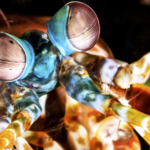

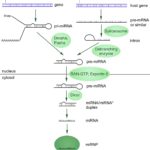
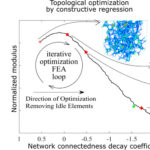

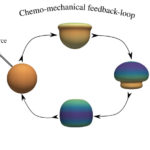

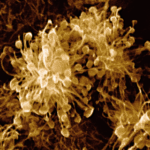


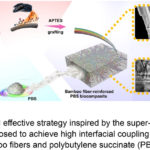
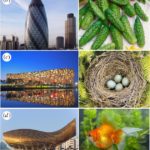
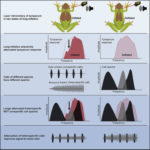
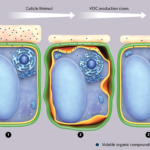
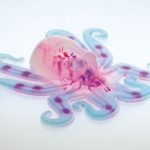
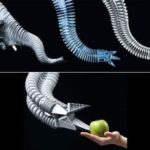

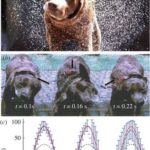



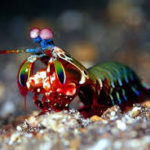
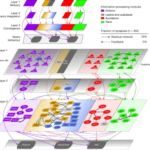
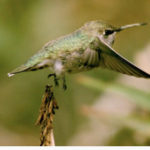
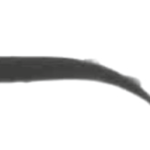
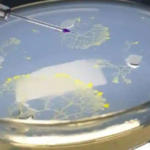
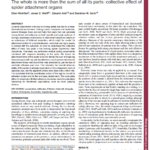

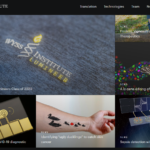

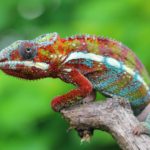


I imagine that the neurological circuits underlying these processes are governed by both 2d spacing maps with their brains as…
to reduce the impact of car accidents, it may be possible to study the force diverting physics of cockroaches to…
you see this type of head-bobbing stability in many avian creatures related to pigeons like chickens. the head ability to…
not like they taught horses how to run! this is an example of convergent evolution where both sea creatures and…
The brain functions in a similar way with neuronal connections. our brains are able to utilize the multiplicity of connections…